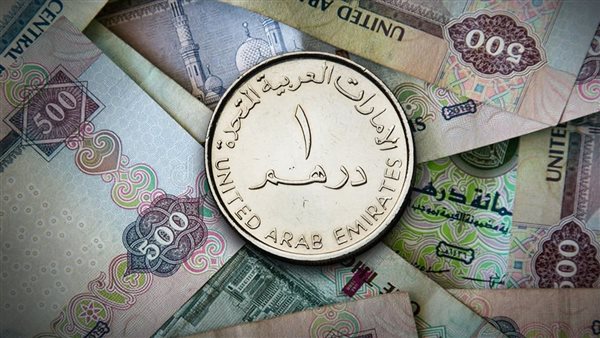
We publish the price of the UAE dirham today, Thursday, December 5, 2024, in the Central Bank of Egypt, according to the latest updates to dollar prices and currency rates on the official website of the Central Bank of Egypt.
The price of the UAE dirham in the Central Bank of Egypt today was as follows:
Buy: 13.54 pounds.
Sale: 13.58 pounds.
The Monetary Policy Committee of the Central Bank of Egypt decided, in its meeting on Thursday, November 21, 2024, to maintain the overnight deposit and lending rates and the Central Bank’s main operation rate at 27.25%, 28.25%, and 27.75%, respectively. It also decided to keep the credit and discount rates at 27.75. %.
This decision reflects the latest developments and expectations at the global and local levels since the previous meeting of the Monetary Policy Committee.
At the global level, the restrictive monetary policies pursued by advanced and emerging market economies have contributed to the decline in global inflation, and accordingly some central banks have tended to gradually reduce interest rates, while maintaining the downward path of inflation to reach its target levels.
While the rate of economic growth is largely stable, its outlook remains vulnerable to some risks, including the impact of restrictive monetary policies on the growth of economic activity, geopolitical tensions, and the possibility of a return to protectionist trade policies.
Despite increased expectations of lower global commodity prices, especially energy, upside risks surrounding inflation remain, as commodity prices remain vulnerable to supply shocks such as global unrest and bad weather.
On the local side, preliminary indicators for the third quarter of 2024 show real GDP growth at a faster pace than the 2.4% recorded during the second quarter of the same year.
Economic activity forecasts for the fourth quarter of 2024 indicate a continuation of its upward trend, although it has not yet achieved its maximum capacity, which supports the downward path of inflation in the short term, and it is expected to recover by the fiscal year 2024/2025.
Regarding the unemployment rate, it witnessed a slight increase to 6.7% during the third quarter of 2024, compared to 6.5% during the second quarter of the same year, as the pace of providing job opportunities did not keep pace with the growth rates of entrants to the labor market.
General annual inflation remained largely stable for the third month in a row, at 26.5% in October 2024, driven mainly by higher prices of administratively determined non-food goods such as liquefied petroleum gas (butane cylinders) and medicines.
This is consistent with a slight decline in annual core inflation to 24.4% in October 2024 compared to 25.0% in September 2024, as well as a decline in annual inflation for food commodities, which reached 27.3% in October 2024, its lowest rate in two years. These results indicate, together with Along with the slowdown in monthly inflation rates, inflation expectations have improved and continued on the downward path, despite being affected by measures to adjust public financial conditions.
Expectations indicate that inflation will stabilize at its current levels until the end of 2024, although it is surrounded by some upside risks, including the continuation of geopolitical tensions, signs of the return of protectionist policies, and the possibility that public financial control measures will have an impact that exceeds expectations.
However, the inflation rate is expected to decline significantly starting from the first quarter of 2025 as the cumulative impact of monetary tightening decisions and the positive impact of the base period are achieved.
In light of developments at the local and global levels, the Committee believes that keeping the central bank’s key interest rates unchanged is appropriate until a tangible and sustainable decline in the inflation rate is achieved.
The Committee indicates that it will continue to follow a data-based approach to determine the appropriate duration of monetary tightening, based on its assessment of inflation expectations, the development of monthly inflation rates, and the effectiveness of the monetary policy transmission mechanism. The Committee will also continue to closely follow economic and financial developments and evaluate their effects on economic expectations, and will not hesitate to use… All the tools at its disposal to rein in inflation.



